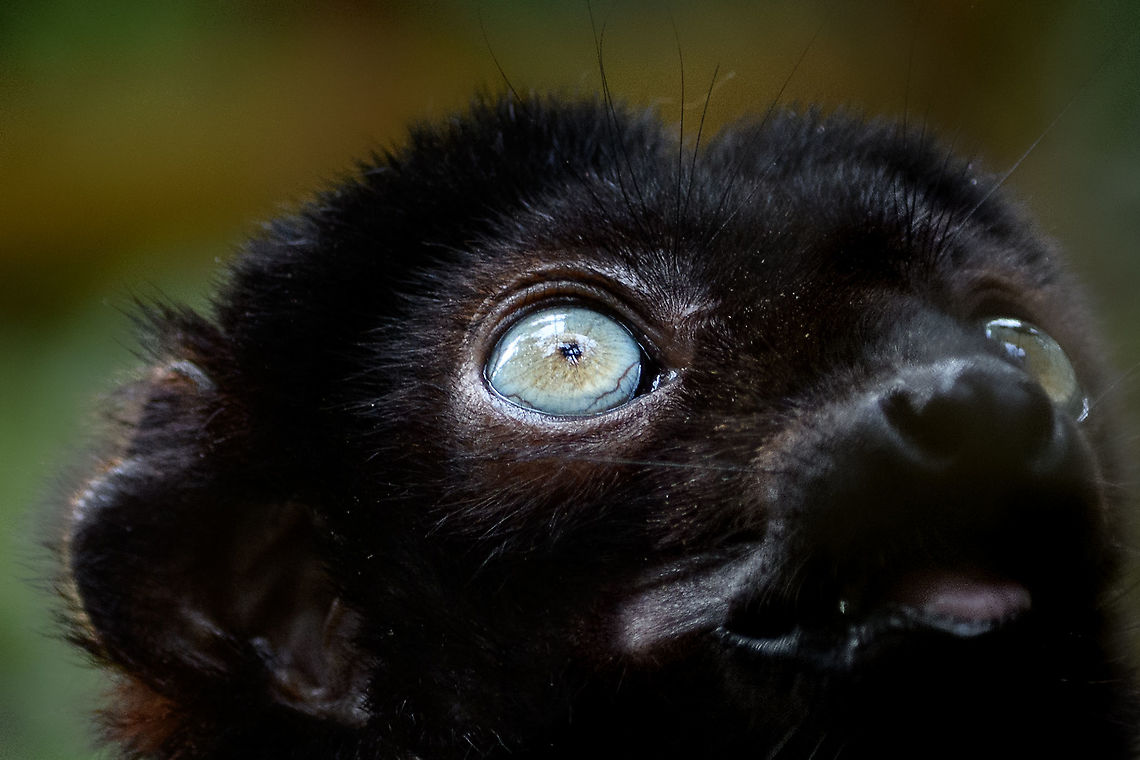 Promoted
Promoted
Blue-eyed black lemur - male eye, Ivoloina park, Madagascar
In captivity, to be released back into the wild. As the name suggests, this species' distinguishing feature is their blue eyes, present in both males and females. A unique feature in primates, the only other species that (sometimes) has blue eyes is us. The male is black with occasional brown highlights, the female is a vibrant orange color.
Almost all of Madagascar's 100+ lemur species are endangered or critically endangered. This one is in particular trouble. It's original natural range is tiny, a small speck in the Northwest of Madagascar. This habitat is almost entirely cleared, and the species is close to extinction in the wild.
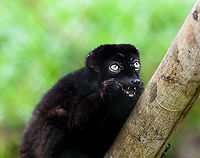
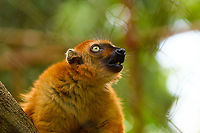
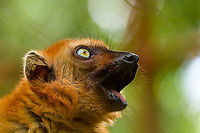
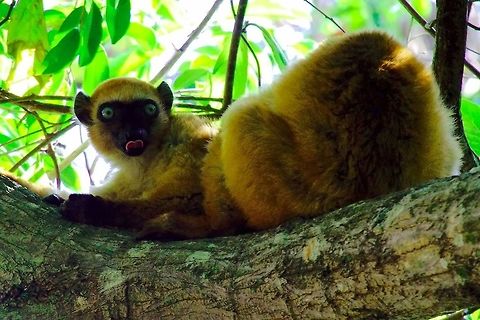
The blue-eyed black lemur, also known as the Sclater's lemur, is a species of true lemur. It can attain a body length of 39–45 cm, a tail length of 51–65 cm- a total length of 90–100 cm, and a weight of 1.8-1.9 kg. Being a primate, it has strong hands with palms like a human, which have a rubbery texture to give it a firm grip on branches. Its tail is longer than its body and non-prehensile.

comments (15)
Posted 5 years ago
The Blue-eyed black lemur (Eulemur flavifrons) is one of the most threatened primates on Earth. These enigmatic creatures are the only species of lemur and one of the few primates to have blue eyes! Sadly, they are critically endangered and are restricted to a small area of northwestern Madagascar. This is the only place on the planet where blue-eyed black lemurs exist in the wild. They provide valuable services to their ecosystem. They pollinate many plants while feeding on nectar and pollen. And, they assist in the propagation of many plants as they don’t digest seeds from the fruit that they eat. The lemurs spread seeds from more than 50 species of plants, along with fresh fertilizer (aka poop). There are likely many plants that rely on the blue-eyed black lemur for seed dispersal.
Deforestation has left them with hardly any habitat to live in and surveys indicate that there are less than a thousand individuals remaining. With such a small population, the blue-eyed black lemur could be extinct in less than a decade. Deforestation is a big problem in Madagascar because the people need to cut down trees to build homes, burn wood for fuel, and make space to grow rice. Food scarcity has even driven some people to hunt lemurs for food. But, conservation efforts are bearing fruit. Organizations are training farmers to grow rice in a sustainable way and are focusing on ecotourism to generate income for local people. Hope is not lost for the blue-eyed black lemur and the Malagasy people. {Spotted on Madagascar by JungleDragon founder, Ferdy Christant} #JungleDragon #Madagascar #lemur #Eulemurflavifrons #Blueeyedblacklemur Posted 5 years ago